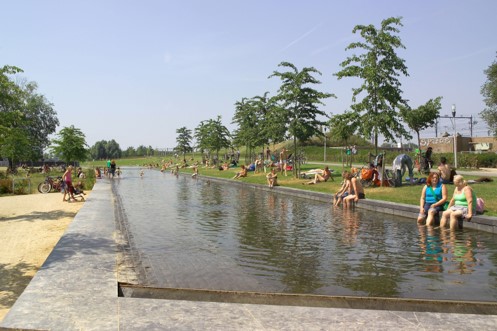
The idea behind the park's development was for the buildings and their cultural activities to be integrated into the surrounding park to preserve the site's unique character. The project team and city council wanted the new Westerpark to be a park for the 21st century. A multifaceted park, its users and whose multifunctionality answers the different needs of the local community and the entire city. From the beginning, it was meant to be an egalitarian public space available to everyone. The park was meant to be open-ended, dynamic and evolving. The cultural site is intended to be sophisticated, unique and particular to the cultural geography of Amsterdam.
The redevelopment process of Westergas always tried to minimize the impact of the actions, starting with the purification of the soil. The transition towards transforming the Westergas buildings into sustainable ones is still underway. Among the main actions are the circularity of plastic-free waste and the transition to 100% electric energy.
Westergas has transformed from a production centre to a vital aggregation centre for the city.
Westergas's redevelopment process always tried to minimize the impact of the actions, starting with the purification of the soil. The transition towards transforming the Westergas buildings into sustainable ones is still underway. Among the main actions are the circularity of plastic-free waste and the transition to 100% electric energy.

Westergas has transformed from a production centre to an important aggregation centre for the city.